 BBC News
BBC NewsBorrowing was £17.4bn last month, the second highest October figure since monthly records began in 1993.
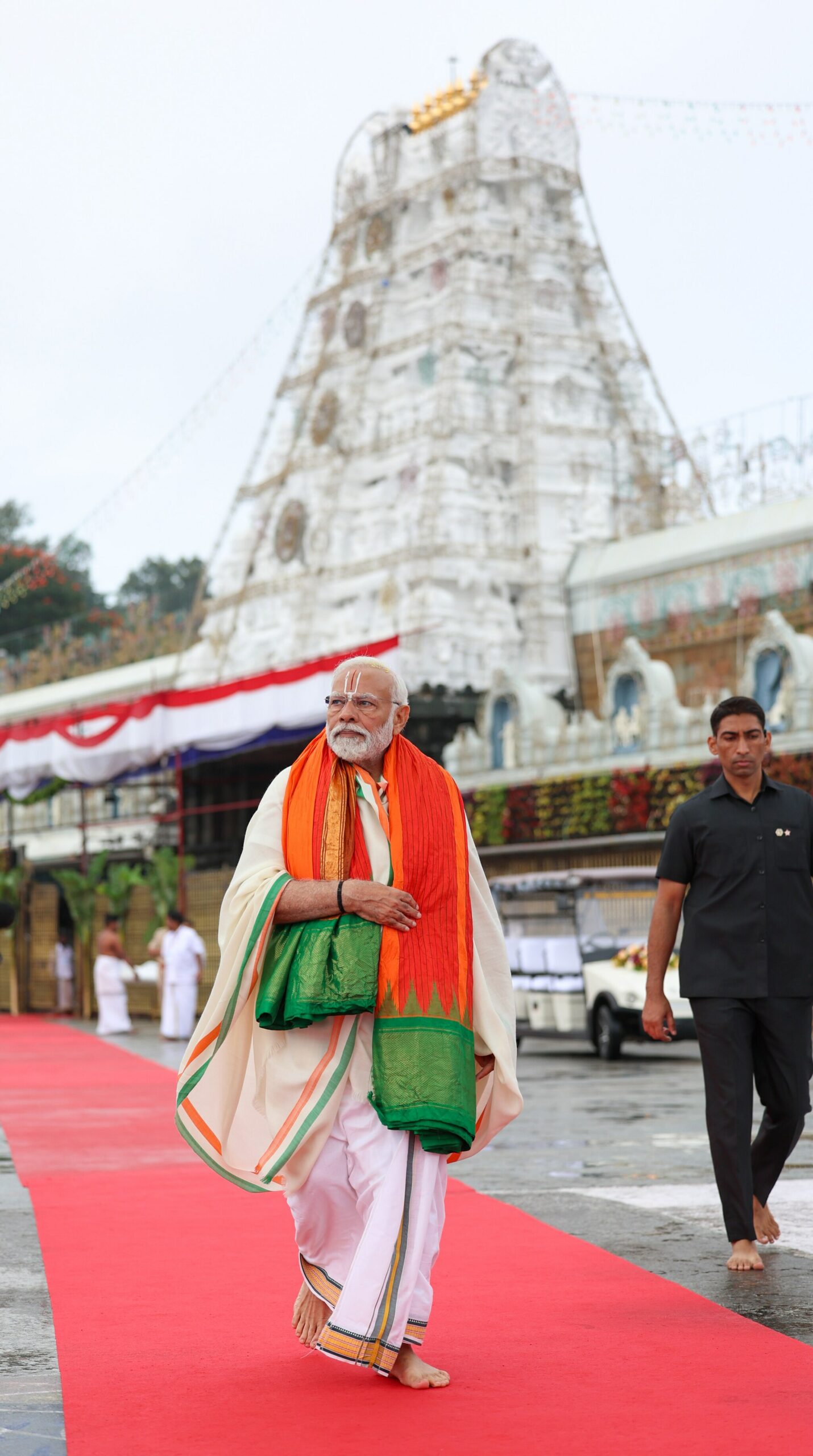
Christopher Jackson
Narendra Modi is wearing one of his trademark Nehru jackets. This one is grey, to match the flow of his beard. A microphone is neatly clipped on to his lapel. His body is poised – one might almost say, coiled. It is an energy I have seen before: that of someone confident in his power. Obama in his heyday used to have it; Trump 2.0 has it more than his 2016 incarnation. Among UK PMs, nobody has really had it since Tony Blair. It has to do with suitability to office, and is slightly different to entitlement, though it may dovetail with it.
Among world leaders, some are simply better at the job than others. “Modi is in the front rank of world leaders at the moment,” Sir Martin Sorrell tells me.
To look at Modi is to sense that he knows this. It’s to do with a knowledge of what power is, and what it can do. In the interview context, it is to do with what can be implied, and what can be said. Modi’s words come with a kind of fine calibration, which has to do with the confidence which only experience can give.
Asked about the role of women in India’s economy, he says: “We have a perception in India that women are householders. This is not the reality. Look at the agricultural sector. Even today, I’d say 60 per cent of economic activity is carried on by women. Women carry out a lot of economic activity, but this is not known to the world at large.”
It is an image of an India altering rapidly – more rapidly than most people understand. World leaders talk about change all the time, but few come to really enact it as Modi has done. Modi is synonymous with transition, historic shift –change whether you like it or not. There is a certain irreversibility about Modi’s India: it’s a point which he rams home repeatedly through choppy hand actions. His body remains solidly at rest in the chair as he speaks – as if to imply that he will occupy power for a good while yet.
He continues, the master of his brief who knows he will not be interrupted by the India Today interviewers: “Even today 15 per cent of commercial pilots are women from India. Now this didn’t happen overnight.”
There’s undeniably something controlled about the environment in which Modi is evidently used to speaking. The atmosphere is deferential – greatly different from the somewhat boilerplate hostility of a UK interviewer. In some ways, that’s refreshing for the UK viewer, even though there is something uneasy about it all: we are witnessing the sort of power which isn’t easily challenged.
Modi goes on to state that the fact that people do not know about the vibrancy of the female contribution to the economic sector, shows that the country is “the victim of a certain ideology.” He then talks of a recent meeting with the President of Egypt Abdel Fattah El-Sisi who Modi reports as saying: “Western countries talk about female empowerment. Here in India I’m really seeing it.”
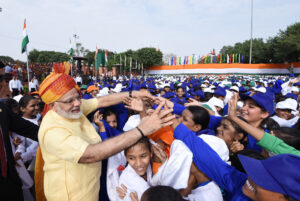
The Prime Minister, Shri Narendra Modi interacting with the school children after addressing the Nation, on the occasion of 71st Independence Day from the ramparts of Red Fort, in Delhi on August 15, 2017.
Modi drives the point home, wagging his unusually long index finger. He talks of women who used to sell wadi in the villages who have become drone pilots; he talks of the women who stage his rallies (“that is a decision by me and my Party”); he tells of his mandate to give Anganwadi workers uniforms.
As he talks the interviewers nod with pleasure; it is as if they have come to listen to this clipped and confident man, not to interrogate.
The Modi Debate
So who is the man who has ruled India now for over a decade? Out there in the country, and in the world, it would be naïve to expect a major leader of a country of over a billion people to be without controversy. He has undeniably raised GDP, but he has raised racial tensions too; he has made huge structural changes across the judicial, banking and taxation systems but India may have lost some of its uniqueness as a result; and in foreign policy terms, he commands great respect on the global stage, but some wonder if he can continue to be friends to both the East and the West.
When I speak to Mohamed Amersi, the philanthropist and author of Why?, he tells me: “Modi is from Gujarat. Gujaritis are known for their drive, their ambition and their business acumen. Overall he has been a terrific leader for India. He has won elections outstandingly and put India on the world stage.”
But Amersi adds a nuance to this: “India’s beauty was that it was the largest democracy in the world, accommodating such diversity and ethnicity of people. Unfortunately under Modi this picture of India has been shaken. It seems there is a very strong Hindu nationalistic side to him, which has negatively impacted the view of India as a whole. Likewise complacency set in during the recent elections, and the results were not great.”
For this article, I talked to a wide range of figures including those who have known Modi personally, and worked closely with him, as well as those affected by his decisions, in order to understand where India is really going under his leadership.
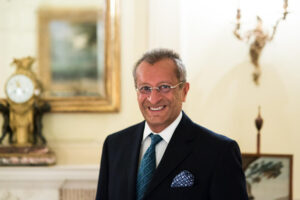
One thing’s for sure: his effect on the young has been considerable. The academic Christophe Jaffrelot who has written extensively about Modi tells me: “He relates to the young the way he relates to others to a large extent, by inviting them to celebrate the greatness of the Indian past, culture, achievements, future… However, he speaks also to every category of the Indian society separately. Vis-à-vis the youth, for instance, he will urge them to study and will give them advice before the exams season. He uses his monthly radio program there, Maan ki Baat.”
So we have before us a figure of gigantic stature, one whose true impact is yet to be felt. That’s because like every great leader his identity is now inextricably bound up with the destiny of the country he leads. The great philanthropist, businessman and commentator on India Dinesh Dhamija has called ours the Indian century. If that’s the case, it’s also the Modi century, and we may well be discussing the most consequential leader of our times.
Modi is continuing. “When I rebuilt homes after the Gujarat earthquake I dedicated them to women. When I came to Delhi, I made it a rule that when a child enters school, they not only sign the name of the father in the register but of the mother too.”
As he speaks my eye drifts to the pictures behind him on the wall. There is one which looks it might be the straits of Mumbai and my mind rotates back seven years to my last visit to India, and a particular bridge.
The Bridge
For many people is personal, and if that’s the case Modi is likely to be personal too.
I first went to India in 1998, an 18-year-old who knew nothing of the world, and still less of India. It all came as a shock: the sheer bustle of Mumbai, the magnificent sweep of a country where cities you’d never heard of were bigger than London, and the helter-skelter joy of its people. It was a place then of nascent Internet cafes, of inevitable dysentry for visitors getting used to the food, and a quirkiness about the people which I would later discover in literary form in the novels of RK Narayan: everyone on the up – or with the potential to be so.
India in those days still opened up onto a world of difference – a place so unlike home with its taken-for-granted modernity. It was preparing itself even then to be Modi’s India – but perhaps it took a major leader like Modi to make it happen so fast, and seemingly all at once.
Something is always sacrificed when progress happens. The pieces of life rearrange for good – and it would be hard-hearted if we held no affection for what is lost.
Former justice minister Lord Wolfson recalls his own visit to pre-Modi India in 1995: “My connections with India go back to when I got married,” he tells me at an event to celebrate ties between the Jewish and Indian communities in London. “We spent our honeymoon in India. I bought my first property when staying at a hotel in Varanasi. We stayed there because the hotel advertised that they had a fax machine so the contract could be faxed to us. Those who know Varanasi in 1995 will realise that the fax machine turned out not to be in the hotel but in a shop about two miles away, owned by someone who I think was distantly related to the man who owned the hotel.”
The year after my first visit to India, the foundation stone was laid for the Bandra–Worli Sea Link. When I returned two decades later, Modi had been power for three years, and it had already been built, all 5.6 kilometres and eight lane of it. There can be few more dramatic drives in the world than the one across from the airport towards the Taj where I was lucky enough to be staying the second time around. It felt like more than a drive towards the hotel; it felt like a journey into the future: the future in all its excitement, its dizzying numbers and its inevitable complications.
It was David Renwick who once wrote of former President Barack Obama that the country’s first black President was a bridge from one set of realities to another: in this case the metaphor was to do with race. But in reality Obama’s policy achievements were relatively thin, and it is a far better metaphor for Modi.
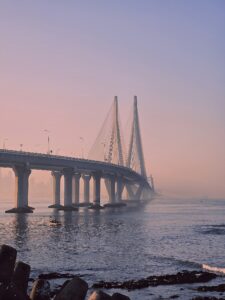
At any rate, nobody could have guessed when I left in 1999 that a little known volunteer in the Rashtriya Swayamsevak Sangh (RSS) with no executive experience would in two years’ time become Minister of Gujarat, and then in time be instrumental in the creation of a billion metaphorical bridges into a future which we share with India.
Sometimes, the world could see the shape of India’s likely impact. In 2002, Lord O’Neill of Gateley coined the phrase “the BRICs” in order to refer to a future defined by then developing economies. O’Neill recalls: “We deliberately called that ‘Dreaming with BRICs’. People forget that we wrote about what could happen if every country fulfilled its potential. Of course, in reality the idea that every country in the world would reach its productivity potential is crazy. The idea that they’d all do it at the same time is completely absurd.”
So what happened? Well, Brazil got sidetracked by Bolsanaro, Putin invaded Ukraine with results we’re all familiar with, and China continues to plough forward in dystopian fashion under Xi Jinping. O’Neill continues: “In reality, what has happened is that China has become so big that it’s twice the size of the other three put together. So when it comes to discussing the BRICs as an economic or political group, China completely dominates. Because of that, it still means that the various assumptions we made about the BRICS becoming bigger than the G6 in the future, actually could still happen – despite what has been a very disappointing decade for Brazil and Russia.”
Even so, China continues to be a place one doesn’t exactly admire. In its totalitarianism, its lack of cultural capital, and its sinister vision of the future, it feels in fact redolent of past dictatorships and one party states. One could argue that India, by electing Modi three times, fared best of all.
“Overall, China and India look as though they’re going along the central path that we assumed,” O’Neill continues. “Meanwhile, Brazil and Russia have proved that they suffer from the so-called commodities curse. They can’t seemingly adjust their economies from being excessively dependent on commodity price swings. They keep having these violent economic cycles.”
All of which means that India under Modi has managed the opposite: we never talk of commodity price swings in respect of India, and nor do we talk of violent economic cycles. This is perhaps why the former Chancellor of the Exchequer Nadhim Zahawi is so cheerful and bullish when he says to me at a recent Finito event: “Modi is fantastic. Buy India!”
Back to Gujarat
But when we’re buying the 74-year-old Modi, what exactly are we buying? The man I see in front of me, who we might imagine to be on display in some sense is in fact an enigma.
I speak to Chandrakant Babubhai Patel, known as CB Patel. Patel is a friend of Modi’s, having known him forty years. Patel is known for Asian Media Publications, and Modi mentioned him in his electrifying 2015 speech at Wembley Stadium in front of 65,000 people (with billions more watching at home). There is no doubt, incidentally, that Modi is the best orator on the world stage since Barack Obama: the cadences rise and fall with the same hypnotising inevitability and Modi is fortunate in his voice, which booms confidently.
So what was he like as a young man? “I’ve known Modi since about 1976 or 77,” Patel tells me, “when he was a young man. I read his poems and stories when he was in his early twenties. I was moved by his idealism, though I remember thinking perhaps that it was wishful thinking.”
It is difficult through translation to gauge the calibre of Modi’s poetry, but there are signs that he has a genuine poetic mind, as in this poem ‘Calamity’:
The river, once graceful, a maiden in her first flush of youth
Is today a snarling lioness.
In spate, she lurches in insolence
Loses her inhibitions, pours out her anger
Sweeping away all in her path.
This is a poem which exhibits a pragmatic feeling for the moods of nature which is especially interesting given that Modi, as we shall see, has sometimes been charged with dealing with natural crisis.
CB Patel tells me of Modi’s early years and how they impacted his outlook. “Modi left home when he was 17. He’s best understood as a self-taught man, although of course he has done study. When he was at Gujarat he had no house. He had to go from village to village – lunch today here, and dinner there. He must have eaten in thousands of places. This background taught him tolerance and respect.”
It is difficult to think of any modern leader with this kind of itinerant phase in their young manhood, but in CB Patel’s opinion this meant that Modi was able to gain a unique understanding of the predicament of India, which is one of the reasons besides innate ability, why he has been so successful in providing solutions to its problems. Patel says that it is a ‘doctor-patient relationship’ where the doctor (in this analogy, Modi) must know what ails the patient (poor education, healthcare, housing) before applying any remedy. In his youth, Modi carried out a thorough examination of his country.
Patel continues the story of Modi’s early life: “He worked for almost thirty years as an RSS volunteer, travelling all over the world and established tremendous rapport with the people. He understood people’s mindset and problems.”
The impression is of the man of destiny, almost Abraham Lincoln-esque, who emanates in some way out of the people – as a sort of precise embodiment of what the people happens to need. Naturally, this view has been challenged from time to time.
Modi’s detractors are, for instance, not entirely sure what studies Modi carried out and where. Modi has claimed to have secured a BA in political science from Delhi University and his subsequent MA from Gujarat. But Christophe Jaffrelot tells me: “There is some confusion about his degree: he could never produce his diplomas.”
I ask Jaffrelot if Modi had any mentors growing up: “The mentors Modi mentions occasionally are RSS men and religious figures. Unsurprisingly, as a young volunteer, he joined the RSS when he was an eight year old child. He has been influenced by full time cadres of the organisation known as pracharaks before becoming one himself. This influence was particularly strong because he used to live, as a young man, in the RSS office in Ahmedabad. Subsequently, his other mentors came from religious orders, including the Ramakrishna Mission (that he discovered in Belur Math, near Kolkata) and the Swaminarayan movement (a sect of Hinduism based in Gujarat).”
And is Modi now a mentor to anybody? “Modi has disciples, but mentoring requires a certain empathy – and is very time-consuming. He has always been a solitary figure and, for a long time, an organisation man. His disciples are mostly impressed by his charisma as a national-populist since the 2000s.”
Certainly, Modi’s Hinduism is not in doubt and is even attested in the following poem:
I feel proud as a human, as a Hindu.
When it wells up, I feel vast, an ocean
My faith is not at the expense of another’s
It adds to the comfort of my fellow man.
This is again interesting, because Modi stands accused, as we shall see shortly, of favouring Hinduism over other faiths – indeed practising it to their detriment. It can sometimes seem as though his poetry is pre-emptively answering his later critics.
Modi’s poetry might attest to a busy and wide-ranging mind, but his future was always destined to be political and not poetic. CB Patel continues the story: “When he became chief minister in Gujarat it was in very tragic circumstances. On 26th January 2001, there was a horrible earthquake in Gujarat which killed almost 26,000 people. RSS decided to send Modi, as Chief Minister. Remember: he had never held any executive posts, he was just a volunteer. But he had prepared himself, and he did a tremendous job in rebuilding, rescue and so on. That was the start of his journey as a government minister.”
What followed would be over a decade of leadership of Gujarat. One possible parallel here is President Lyndon Johnson who spent a long time mastering the senate before he became President. This period might be thought of as a sort of laboratory for Modi’s method of governing. Fortunately, Jaffrelot’s masterful Gujarat Under Modi examines this question over 900 dense pages. His argument is that all the political techniques which Modi deployed there are now being replicated on the bigger national stage which he now inhabits as PM .
So how did Jaffrelot go about working on his book? The work had its origins in one of the most controversial episodes in Modi’s career, which occurred in Gujarat in 2002, early on in his tenure as Minister.
There remains huge disagreement over what exactly happened here. An argument broke out in a train carriage on the way to Ahmedebad leading to a fire and the tragic deaths of 58 Hindi men, women and children, many of whom had been returning from a Hindu festival. In the aftermath of the train incident, violence broke out across Gujarat, and the casualties were predominantly Muslim, though many Hindus were also affected. It is argued by his detractors that by labelling the initial incident on the train an act of terrorism Modi may have increased the likelihood of a violent response against the Muslim population. Certainly the US State Department for a while refused Modi the right to travel to the US due to the perception that he’d failed to quell the violence.
The Supreme Court would later clear Modi of any wrongdoing. Nevertheless, Jaffrelot is among those who aren’t convinced by that verdict, which is what motivated him to write his book. “I have visited Gujarat every year, at least twice, between 2001 and 2020. I saw the traumatic effect of the 2002 anti-Muslim pogrom and started to meet and interview survivors, NGO activists, journalists, academics. I had to tell this story and the strategies of Narendra Modi to retain power,” he tells me. “I followed the 2007 and 2012 election campaigns; I saw the rise to power of Gautam Adani, in the wake of Modi; the ghettoization process of Muslims; the growing inequalities; the capture of institutions, including the police and the judiciary. I had to testify. But I am an academic and, therefore, to write a book was my natural inclination – and to do it with some theoretical framework. This is why I analyse Modi’s Gujarat as an example of ethnicisation of democracy, national populism and electoral authoritarianism – these concepts have been used in other contexts.”
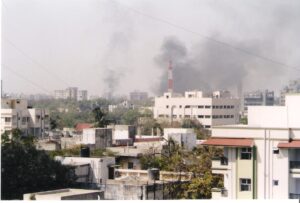
This then is another Modi: the Modi who has used power in ways which ought to alarm us, not least because his modus operandi continues to this day. “Narendra Modi is governing India the way he governed Gujarat,” Jaffrelot continues. “Certainly he did not have any previous national executive experience when he became Prime Minister. But he did not have any executive experience at all when he became Chief Minister. He had never been elected. He was an organisation man. He has invented a political style as Gujarat Chief Minister that he has retained when he became Prime Minister.”
This sounds like an accusation, but perhaps it is not so surprising that a leader would need to invent a style: all leaders must do this or not do the job at all. Nevertheless, I ask what the Modi style consists of. “This style relied on four pillars: first, the polarization of the voters along ethno-religious and xenophobic lines, a strategy that culminated in the 2002 pogrom and that hate crimes (including lynchings) and hate speeches routinized subsequently.”
Similarly, many readers will remember Modi’s claim that ‘infiltrators’ would take away the country’s money were the Congress Party to win the 2024 election – a remark which many interpreted as anti-Muslim, though this was an accusation the BJP strenuously denied. Like many populists, Trump especially, Modi uses language in a way which can feel designed to poke and cause a reaction.
Jaffrelot continues: “Second, the capture of key institutions, including the police and the judiciary, a process that has been made easier by the ideologisation and the moral as well as material corruption of some policemen as well as lawyers.”
In this second point, the accusations against Modi feel reminiscent of the squabbles surrounding the Supreme Court in the US : it opens up onto the notion of democracy being silently dismantled from within by a mixture of reinterpretation of old laws, and of new laws designed to create a Hindu majoritarian state.
Jaffrelot continues with his rap sheet: “Third, the making of a special kind of political economy implicating a form of populist welfarism relying on growing inequalities and crony capitalism – note here that the number one oligarch who grew in the shadow of Modi in Gujarat – Gautam Adani – has become the richest man in India under Narendra Modi’s prime ministership.”
There are indeed unsavoury elements here. Mohamed Amersi tells me: “One of Modi’s main supporters has been the Adani group. Unfortunately the Adanis find themselves mired in corruption allegations in the US. If the charges are proven, the matter may go to the heart of the Modi administration.”
And fourthly? Jaffrelot concludes: “The national populist repertoire of Modi who learned how to saturate the public space in Gujarat by resorting to social media, memes etc. and who started to adopt a sarcastic, provocative register to cultivate emotions like fear, anger and plebeianism.”
All of this is a damning indictment, and it certainly goes to show that Modi is very far from perfect. It reminds me a little of the Irish novelist writer James Joyce, who once read a bad review of his book Portrait of the Artist as a Young Man. He acknowledged that the criticism had hurt, but added: “However, even allowing for the idea that what he says is true, is it even ten per cent of the truth?”
Notes Towards a Rebuttal
Dinesh Dhamija, author of The Indian Century, doesn’t accept Jaffrelot’s critique. “It is a case of the glass half full or half empty. Christophe Jaffrelot has looked at Modi with the latter view.”
Dhamija, one of our leading entrepreneurs who successfully built up and sold Ebookers, has a pragmatic approach to the Modi question. Firstly, Dhamija is keen to point out the essential importance of economics, and I doubt if even Jaffrelot would disagree with this. “Ask Jaffrelot to show you India’s GDP for the ten years before 2014 when Modi came to power and the 10 years after,” he writes to me over email. The graph opposite does indeed show a sharp acceleration under Modi, though it also shows a longstanding upward trajectory dating back to the 1970s. Dhamija adds: “People need food and shelter. Modi has provided these. The comparison has to be with 60 years of the Congress Party rule.” Indeed, if one looks at that longer span of Congress rule then it makes clear how considerable the acceleration has been under Modi.
For Mohamed Amersi, it also worth noting that Modi has been helped in achieving his ascendancy by the historic weakness of the Congress Party itself: “In a way his premiership may also have benefited tremendously from the fact there was no real viable opposition because the Congress Party has been and is in decline.”
For Dhamija, Jaffrelot also omits other important points. “The US did not give Modi a visa to visit the US and thus the United Nations until 2014. This was because the Indian government run by Congress told the US that he is a criminal in relation to the pogrom of Gujurat. Since then the Supreme Court has vindicated him.”
CB Patel is among those who defend Modi over the Gujarat Riots, noting that the Muslim population had sometimes, though not always, been ‘violent’ and adding that Modi is a strong leader.
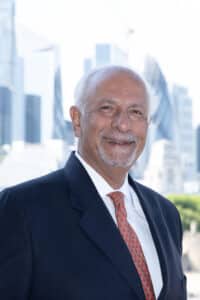
Portraits of Dinesh Dhamija for Finito. 7.6.2023 Photographer Sam Pearce
Dhamija isn’t convinced either whether the talk of pogroms is especially helpfully. He says: “There are 220 million Muslims in India. Modi has not been good to them, but by and large fair. For example, he banned the Muslim divorce law of talaq, talaq, talaq, where a man can just say these three words and divorce his wife. Muslim women voted for him in droves in the Utter Pradesh elections. I also agree with him on Kashmir, where he abolished Article 370, which integrated the laws with the rest of India. Furthermore, the calibre of people in his government are far better than when the Congress Party was in power.”
So has Jaffrelot’s opinion of Modi altered at all since writing the book? “There is one thing that I had underestimated till I wrote my two books on Modi Modi’s India and Gujarat under Modi: his contribution to the development of infrastructure. He has prioritised the building of roads and energy plants in particular. This is a very revealing choice: in Gujarat, this investment prevailed over education and health. This is revealing of his supply side economic orientation that explains the kind of jobless growth India (and Gujarat in particular) is experiencing. India is not creating enough jobs partly because its entrepreneurs promote highly capitalistic activities and because the manpower is not sufficiently qualified.”
So in Jaffrelot’s view, Modi might be a bridge into the future – but it is irresponsible to build bridges themselves.
Not surprisingly, CB Patel has a different view: “Modi has been absolutely transformative. In four years of his tenure, India opened 500 million bank accounts and that is very important. He then introduced a VAT equivalent which makes a vast amount of money in indirect taxation, and then spent that money very wisely and efficiently. They have built almost 40 million toilets – as well as making major strides in health and education. But he can’t be popular all the time. When you’re PM of India, some people will support you and others will be against you, but a democracy like India is a country of contrasts. Modi has given India legacy.”
Dhamija adds: “What explains Modi’s popularity? One factor is Modi’s appeal to women. They turn out in huge numbers to vote for the BJP, thanks to policies such as the Swachh Bharat (‘clean India’) mission to improve sanitation. This has improved not only standards of hygiene across India but security for women and girls. A welfare system that delivers benefits directly to women, rather than via their husbands, is equally valued.” While accepting many of Jaffrelot’s points, I find it hard not to accept Dhamija’s and CB Patel’s too.
Check a Trade
Of course from the UK perspective there’s huge interest in the kind of economy which Modi is building because post-Brexit especially, the UK wants to be a part of it. Dhamija has been especially prominent in terms of arguing for an India-UK trade deal, and was disappointed by the failure of the Johnson and Sunak administrations to get a trade deal over the line.
There is, of course, a curious role reversal here: the former colonial power needs a trade deal rather more than its former subjects. During my second visit in 2017, I recall visiting the rundown British Residency in Hyderabad, a palace once owned by the East India company. It has recently been restored but I shall always remember the rundown version as a symbol of the decay which often happens to Empire – and which certainly happened to the British Empire.
Part of what makes the UK-Indian trade talks so compelling is the way in which the dynamics of history are playing out, and the emotions which go with that. “India in 1700 had 23 per cent of the world’s GDP, and was the richest country in the world,” Dhamija tells me. “When the British left, India had three per cent of the world’s GDP. In 250 years, it went from riches to rags.”
Is there a psychological difficulty then, I ask, for Modi’s India when it comes to doing a trade deal with their former colonial rulers? Dhamija is philosophical. “One thing about history is that as time passes, you forget things. History is written by the victors. When I was doing A-Level history in the UK, we never learned about what was happening in the colonies good or bad.”
So are the elites who forge trade deals liable to take a relaxed view of the past? Dhamija takes a nuanced view: “It depends on the politics. From the Indian point of view, they’re going to say: ‘We’re not going to sell ourselves down the river.’ Or they’ll say, ‘We need something back’. You might also hear history professors say that the UK took $45 trillion dollars of money out of India in today’s money – but if you only pay heed to such voices, then you’re never going to have a trade deal.”
The former Northern Ireland secretary Theresa Villiers also takes an interest in UK-India relations: “Despite the positive legacies of empire, we should not be naïve about the colonial era,” she tells me. “In their near 200 year involvement with India, the British authorities frequently adopted approaches which would be unacceptable in the modern era. Tragedies such as the 1919 killings at Jallianwala Bagh, when soldiers opened fire on a crowd of unarmed protesters, still cause pain and grievance even today.”
Even so, like Dhamija, she thinks it is time for the Modi and Starmer administrations to come together in the name of future prosperity: “But 77 years on from the departure of the British from India, the contested aspects of our shared past should not prevent us from capitalizing on the huge amount that we have in common,” she tells me. “We should also remember that influence has never been a one way street between our two countries. We may have left India a rail network and a legal system, but they gave us the numerals we use today, including the crucial concept of zero.”
Villiers adds: “Without Indian maths we might never have emerged from the Middle Ages in Europe. India’s massive cultural, mathematic and scientific influence on the world dates from as far back as the Greek and Roman era. There should be a much greater awareness of this, and I welcome William Dalrymple’s effort to put that right in his recent book The Golden Road.”
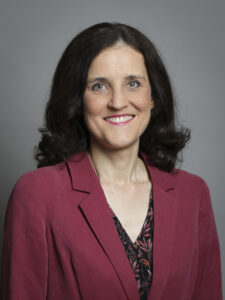
So it’s a two-way street – and one we should all be happy to walk down. What chance does Jaffrelot think there is of a comprehensive trade deal between the two nations during Modi’s last term? “I would rephrase the question and ask: what will be found in the FTA that both countries are bound to sign – because the stakes are too high for nor reaching some agreement?” comes the reply. He adds: “By the way, the same thing can be said about the EU-India trade negotiations. In both cases, there are big bones of contention, in the context of rising protectionism and xenophobia. The most damaging one may concern visas: India would like the Europeans to give visas to many citizens of the country (including IT engineers) but in the West (the US are no exception here), anti-immigration policies are the order of the day, in the context of the rise of the far right. So there’s this major paradox: national-populists like Modi and Trump have a lot in common (including their rejection of liberalism), but they want their country to be great again – at the expense of the other, inevitably.”
And the desire for greatness is naturally shared by Great Britain too.
The View from London
So how does Modi really view UK relations? Is it a priority for him? Jaffrelot tells me: “The main difference with his predecessors pertains to the way he has tried to relate to the Indian diaspora, and to its Hindu component in particular. He relies on the groundwork, the Hindu Sevak Sangh, the local version of the RSS, the British branch of the ABVP (the students union created by RSS), the VHP-UK and The Friends of BJP, another UK-based organisation related to his party. Narendra Modi has engaged the diaspora by organising mass meetings in iconic places like Wembley stadium. Cameron and other Conservative leaders who were Indians themselves or of Indian origin (including Priti Patel) have helped him – and been supported by Hindu voters in return.”
Modi, then, is not from the UK perspective a remote presence, primarily of relevance within (admittedly strengthened) Indian borders. Jaffrelot explains: “This scenario is not at all specific: the equation between Modi and Trump relied on the same modus operandi. But in the US as well as the UK, other diasporas – including Muslims and Sikhs – are making things more complicated because of tensions between the Modi government and these two communities. To some extent, India has exported to the West some of its domestic conflicts, as was evident from the Leicester riots in 2022.”
Given the importance which Jaffrelot gives to the diaspora I am keen to investigate further. Arguably the most prominent British-Indian today is the shadow Foreign Secretary Dame Priti Patel who is prepared to talk at length about her relationship with Modi and with India.
For Patel, the economic benefits have been resounding: “In 2013, I had the privilege of being appointed as the first UK-India Diaspora Champion by the then Prime Minister David Cameron as the Government commenced a new effort to strengthen ties between our two countries. I have been proud to play a role in fostering those relationships that have led to the value of trade doubling to around £40 billion and greater cooperation in fields including medicine, research and science.”
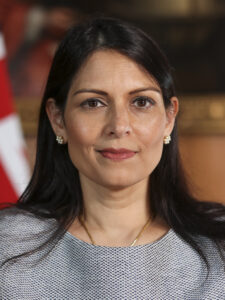
15/09/2021. London, United Kingdom. Secretary of State for the Home Department, Priti Patel. 10 Downing Street. Picture by Simon Dawson / No 10 Downing Street
Patel is clear about the context of this push: it was to do with the need to deepen ties in the face of accelerated change. “With the world an increasingly uncertain and unstable place, our relationship with India can be a source of stability, strength and success in the years ahead,” she adds.
So what is her view of Modi himself? “Under Prime Minister Modi, India has taken great strides forward to fulfil its potential as a leading economic power,” she replies. “He is a leader with a clear set of values and is motivated to increase the wealth and prosperity of India and elevate his country to play a stronger role on the world stage. Over the last decade, we have seen India embrace a further programme of economic reforms to foster new opportunities for investment and it is vital that Britain maintains a position at the front of the queue.”
I ask Patel what it’s like to be in the room with the Indian Prime Minister. “In my discussions with Prime Minister Modi, it was good to hear of his commitment to working with Britain, especially given the links between our country and the strength of the Indian diaspora here. No-one will forget his visit to London in 2015, where he addressed tens of thousands at Wembley, especially as there are not many world leaders whose inspirational words can fill a national stadium. Those links need careful and thoughtful cultivation to build on the benefits we have achieved over the last decade.”
Patel is at pains to point to the great talent which India possesses. “With its growing working aged population and middle class, India is becoming a strong consumer of goods and services as well as a fertile ground for entrepreneurialism to flourish. That presents us with continuing opportunities to support growth in India with our financial services investing in its infrastructure and key industries to further enhance the partnerships we’ve already established. There are so many areas where we can strengthen our partnership with India covering renewables, manufacturing, AI and new technologies, and medicine and pharmaceuticals. While in Government, the Conservatives recognised this. As well as the engagement with Prime Minister Modi, we also agreed a roadmap with India to boost our bilateral relationship in the years leading up to 2030, with a plan to deepen collaboration on trade, defence, climate and health. Importantly, we were working towards deepening the ties needed to enhance cooperation on joint security challenges, which included our armies training together in recent years.”
Patel argues that a great deal of progress was made during the 14 years of Conservative-led government. “The last Conservative Government was also working towards establishing a free trade agreement with India, which had the potential to boost trade and cooperation with India being a key market in the Indo-Pacific region for Britain and with us being a key market in Europe for India, “ she tells me. “Unfortunately, while progress was being made, agreement could not be reached by the time of the General Election this summer and we wait to see how the new Prime Minister, Sir Keir Starmer and his Labour Government will approach this issue. So far, however, the signs have been negative.”
What is her take on the start of the Labour government? Unsurprisingly perhaps for a shadow foreign secretary, it is far from rosy: “Instead of capitalising on the benefits of Brexit and building on our work to establish a free trade deal with India and other growing economies, Labour wants to take Britain backwards and are prioritising the EU. While our friends and neighbours in the EU continue to be an important market for Britain, as a trading bloc, the EU is suffering from slow growth of barely one per cent a year, compared to India exceeding six per cent. That’s why Britain must be global in our approach so our businesses and investors can stimulate and share in the growth, entrepreneurial spirit and success that India and other growing economies offer.”
I approach the Department for Business and Trade for a comment on Patel’s remarks. A spokesperson comes back: “The Prime Minister announced that UK-India trade talks will relaunch early this year, following a bilateral meeting with Prime Minister Modi at the G20 on 18th November 2024. Work is under way across government to prepare for negotiations with India. The UK is pursuing a twin track approach to trade, negotiating free trade agreements with India and the GCC, while simultaneously resetting the relationship with our European friends. This approach will strengthen ties and tackle barriers to trade with the EU and the world’s fastest growing economies including India, deliver economic growth, higher wages and new investment, and make working people better off.”
As with all governments, the proof will be in the pudding. But while governments can sometimes seem to move at a sluggish pace, thereby frustrating the likes of Dhamija, business is more responsive. In many cases they’re already making up their minds about Modi’s India. They’re already voting with their portfolio allocations and their geopolitical footprint. By and large the result is positive and they agree with Patel’s rosy assessment of India.
The Business Case
When I speak to Sir Martin Sorrell, the legendary chair of S4 Capital, he echoes Zahawi’s injunction to: “Buy India!”
“I’ve always been bullish on Modi and India,” says Sorrell. “I’ve spent a fair amount of time there, I’m there often. Just look at the population statistics – India talks of going from 1.4-2.8 billion – on that basis it’s quite clear which direction it’s going. Modi has done a great job, but the last election wasn’t so good for him. He stimulates a little bit of controversy but all strong leaders are controversial,” he laughs.
So what’s his read of the immediate trajectory of the Indian economy? “The economy is slowing down, but we’re still seeing very significant GDP growth which we’d give our eye teeth for here. You can’t criticise that. Of course, India has been a beneficiary of the Taiwan risk in China: clients and companies are concerned about the risk associated with China. If you look at the maths, China is $18 trillion out of a global $106 trillion GDP so you should look to have around 15 to 20 per cent of your sales there. So if you’re a big company, an Apple or a Tesla, you don’t really want more than that sort of percentage of your sales to come out of China – so you need to look at alternatives in the region.”
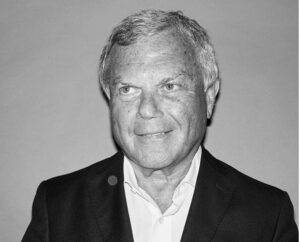
Sorrell continues. “In respect of China, supply chains have been disrupted by what’s been happening on two counts: one is security or defence and the other is climate change. Manufacturing is now not the vogue; it’s more about building resilient supply chains with alternatives. If you’re looking at Asia, and if you’re big in China, unless you want to be bigger – like Unilever at nine per cent – then the number one alternative is India.”
Theresa Villiers agrees: “India is well-positioned to take advantage of the growing realization in the west that over-dependence on China poses serious risks to our prosperity and security. The Covid pandemic starkly demonstrated the pressing need to diversify global supply chains and reduce reliance on China. That makes India a more important partner than ever before.”
But Sorrell also has this to say in respect of Modi’s India. “It’s not an easy country to navigate. You have strong entrepreneurial talent, like the Mittals, Mahindra and others. All these people are outstanding entrepreneurs in India and are flexing their muscles elsewhere: look at Sunil Bharti Mittal here with BT.”
All that is to the good, but there’s a warning coming. “I think having said that there are also issues surrounding tax, the courts, and rule of law. I remember going to a dinner – I won’t say who it was, but a leading Indian entrepreneur who was very bullish – and the Chairman turned to another speaker who was an ex-Russian oligarch, and said: “Would you invest in India?” The reply came: “No.” The reason was that the US still offers relative stability in terms of the rule of law and taxation.”
In that sense then India might be viewed as just one alternative. And the others? “Beyond India, there’s Indonesia, Vietnam, Thailand, and the Philippines as well as Singapore and Malaysia.”
So what will the situation be by 2050? “By 2050, it will be the world’s third largest economy after the US and China, followed by Indonesia and Germany.” And how does he view Modi in this sense? “He’s a very strong leader with firm points of view, and people who have firm points of view create contrary points of view. In the last election because of those issues, it caused him some electoral difficulty.”
But not every commentator is quite so positive about Modi’s India as Sir Martin Sorrell. Gurneet Singh, the founder of Sterling Rose Capital, tells me: “India is a sleeping giant. Politically, I get the feeling they’ll be good but they’ll disappoint. This is an intuition. They’ll be the third or fourth largest economy. But there’s something about India that’s tricky. There’s a billion cultures, and it’s a highly bureaucratic culture and it’s not as harmonious as China which has this amazing top-down process to push businesses along.”
Singh is impressed however by how Modi is playing the geopolitical game. “India is a friend of the West and there are tonnes of influential Indians in the West. And the whole history of the Commonwealth helps, but it’s also very strategically important in the US. They’ve also played Ukraine very well. Saudi and India are playing this well – in the sense of their own interests.”
Here then is another sense in which Modi is a bridge – not just from past to future – but between East and West. Modi has shown himself as comfortable talking to the diaspora in Wembley Stadium as he is when talking to Putin’s Russia or Xi’s China. Dinesh Dhamija agrees: “Far from ostracising India over its neutrality over the Ukraine war, or for buying Russian oil, the G7 regards Modi as an honest broker in global affairs, the leader of a fast-modernising democracy and their best hope for a consensus of like-minded nations in the face of Chinese and Russian aggression.”
CB Patel agrees, citing Modi’s handling of the Middle East. “Modi is the only foreign leader who one day can go to Jerusalem and the same day go to Ramallah in Palestine. He must be able to communicate properly with both Jewish people and the Arab people in order to do that.”
So will this be the Indian century? Singh says: “They’ll be a force – one of four, with the others being the US, China and the EU if it can get its act together. India’s military prowess is strong. They’ve got nuclear, and their soft power is far in excess of China. It’s interesting to note there’s almost zero cultural influence coming out of China. But with India, you’ve got Bollywood, cricket, the food, the music – there’s a lot of connective tissue and I think they’ll have influence for that reason as well.”
On the ground
This connective tissue means that there are more of us living and working in India than ever before.
And it’s only when I speak to an international entrepreneur in the healthcare sector, who asks that his comments be anonymised in case he ever wants to apply for an Indian passport, that I find the complexity of Modi beginning to crystallise into images I feel I can grasp. The danger when discussing a figure like Modi is that we resort to generality because the country is so big and the political achievement so large.
“There’s a lot of polarization in terms of what he’s up to,” he explains. “Some people think of a fascistic figure, who’s been gaining more and more power. But Modi to a lot of Indians is a bit of a hero as he’s pulling them out of economic hardship, although he is also locking them into certain structures which won’t be reversed. So they get to have their mobile phones, and they get this and that – but it all comes at a price. They now have to be banked and taxed. India before was lots of local markets, bartering of trade and goods.”

That sounds happy. “Yes I think it was. There was lots of happiness, and connection to their various gods and goddesses. I think he is slowly stripping all that way and commoditising everything, building malls, selling the Western lifestyle, and accruing more and more power.”
This feels just: there is nuance here. But it doesn’t end there: “There’s a lot of fear among minority groups: among Muslims, and in the gay population. Goa is obviously different in that respect, but you sometimes hear the sentiment in the country that things are going the wrong way in terms of openness, and it’s certainly a tough country to live in if you happen to be a Muslim. In Delhi, all of the monuments now are Hindi only.”
The entrepreneur paints a picture of a harsh country, where a strengthening central government can sometimes appear as if from nowhere. He says he’s seen this in Goa too. “There’s a lot of corruption. There’s a massive building site near where we’re staying. It’s a gigantic house and they’ve been trying to build it for a very, very long time. It’s some finance director’s holiday home. These types of people have holiday homes all over the country, they plough money through them and out the other side. A lot of money gets washed into Dubai. Wealthy entrepreneurs in India can do a transaction in ten minutes: their money in India will end up in a bank account in Dubai with a deduction fee.”
For all that, the entrepreneur enjoys living in Modi’s India. “It’s an amazing time to be in India. There’s this optimism and opportunity which is hard to match. Along with that, there’s a lot of greed and corruption and a lot of strong-arming by the government. So for example, there are family homes in this nice town called Asagow, where property developers want to build villas. They’ll turn up at a family home which has been in that family’s home for decades – and they’ll kick them off saying they’ve got a note from central government saying it’s theirs. They’re like orcs from Lord of the Rings: they come and they just consume. They’re fat and unhealthy and greedy and rude and they just grab everything they can. So they may not like him in Goa – but people in Delhi love him. There he’s brought economic prosperity, education and opportunity. They’ve learned how to use computers and they’re getting paid.”
In a sense, we’re primed to think that someone like Modi is either good or bad. We want to say yes or no to him, just as we do to everything else.
My feeling is that we need to say yes and no to him. The India of 2047 is likely to have 1.5 billion internet users, half a billion electric vehicles and a financial system processing 300 billion transactions annually; the main individual responsible for that scenario will be Narendra Modi. We may as well say yes to that – not least as it won’t be something we can control. Amid all this there may be things we don’t like: prosperity can lead to greed in the same way as hardship can lead to crime. Likewise, a sincere joy in Hinduism and festivals which CB Patel highlights for me, has plainly its corollary in a sense of disenfranchisement among minority groups. But it is unrealistic to expect this scale of transformation to be unaccompanied by the negative side of human nature.
I watch Modi in the studio again, and realise that he is a figure on a gigantic scale. There is huge skill here. I remember CB Patel’s descriptions to me: “His memory is fantastic. He will remember you, and anything connected with you. He has astonishing communication skills. Before he meets you, he will prepare thoroughly. He wakes up early in the morning. He spends time planning his day. He knows what he wants to do two years from today – five years from today. He is that prepared.”
It occurs to me that whatever we think of the India he’s building, and whatever we plan to do with our own lives, we can at least emulate Narendra Modi in that.
Narendra Modi Education Timeline
1950 – Narendra Damodardas Modi was born on 17 September 1950 to a Gujarati Hindu family of Other Backward Class (OBC)
c.1958-1964 – Modi works infrequently in his father’s tea business on the Vadnagar railway station platform.
1958 – Joins the RSS and begins attending its local shakhas, or training sessions.
1967 – Completes his higher secondary education in Vadnagar. Displays a talent for theatre at school but is otherwise perceived to be an average student.
1970 – After a period of travel across northern and north-eastern India heads to Ahmedabad working in his uncle’s canteen at Gujarat State Road Transport Corporation.
1971 – Leaves his uncle’s employment to become a full time pracharak (campaigner) for RSS.
1978 – Receives a Bachelor of Arts in political science from the School of Open Learning at the Delhi University
1983 – Receives a Master of Arts degree in political science from Gujarat University
2001 – Becomes Minister of Gujarat despite having had no prior executive experience
2014 – Prime Minister of India, going on to win three terms.
2018 – Wins Seoul Peace Prize.